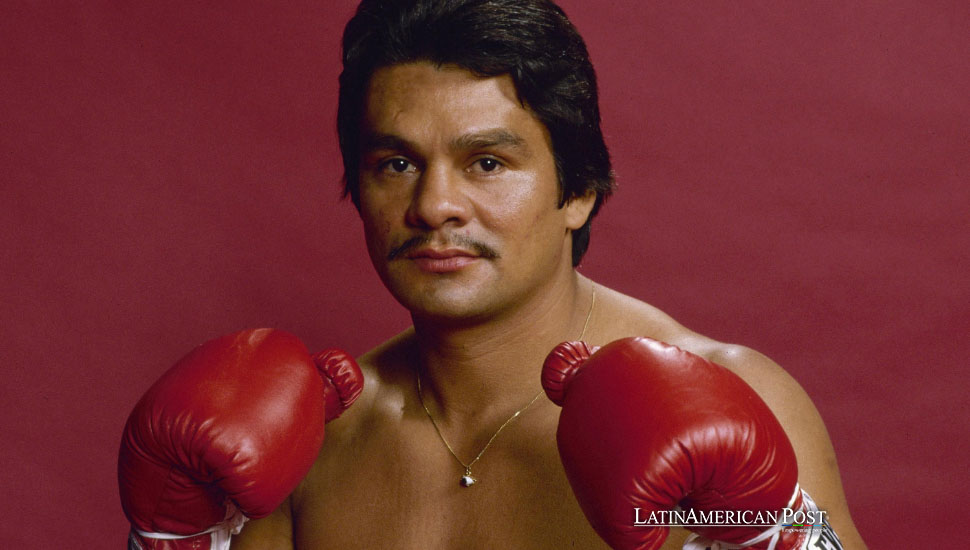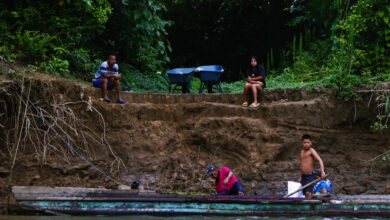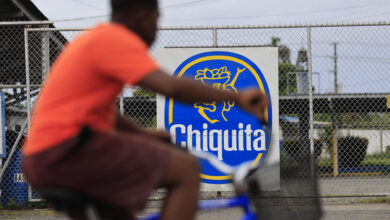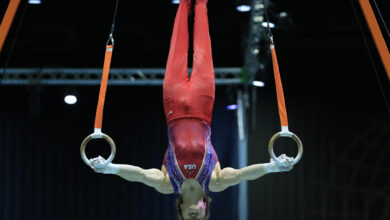Hands of Stone, Heart of Panama: The Unforgettable Saga of Roberto Duran

Roberto Duran, Panama’s national treasure, transcended boxing. “Manos de Piedra” wasn’t just a fearsome fighter but a symbol of resilience, defying poverty to become a legend. This is the saga of a champion etched in controversy yet forever admired by his nation.
In the unforgiving world of boxing, legends are often built on a foundation of sweat, blood, and sheer will. Roberto Duran, “Manos de Piedra” (Hands of Stone), wasn’t just a boxer; he was Panama’s embodiment of struggle, triumph, and a ferocious desire to succeed against all odds. From El Chorrillo’s rough streets to the world stage’s bright lights, Duran’s story is an unforgettable testament to the enduring power of the human spirit and a legacy written in the squared circle.
A Rising Star: From Poverty to Professionalism
Born into a life of poverty in Panama City, Duran found solace and a potential path out of poverty in boxing. Turning professional at an astonishingly young 16, he blazed through the ranks. His aggressive style, a captivating blend of raw power and ferocious intensity, earned him the nickname “El Cholo” – a nod to his working-class Indigenous roots.
Duran’s ascent through the lightweight division was nothing short of meteoric. He dispatched contenders with clinical precision, his reputation steadily growing with each knockout. When he faced the legendary Ken Buchanan for the WBA Lightweight title in 1972, the stage was set for Duran to announce himself to the world. In a brutal display of dominance, Duran overwhelmed Buchanan, becoming a world champion at age 21.
The world would become Duran’s playground. He defended his title twelve times as lightweight champion and compiled an incredible 72-1 record. His reputation for ferocity inside the ring grew alongside his legend outside. Yet, even with his rising fame and success, the fire of hunger remained a relentless need to rise even higher.
The Infamous “No Mas” Incident and Beyond
In 1980, he challenged boxing’s golden boy, the undefeated and seemingly untouchable “Sugar” Ray Leonard, for the WBC Welterweight Championship. In one of boxing’s most iconic clashes, dubbed “The Brawl in Montreal,” Duran defied expectations. Moving up in weight to challenge the more significant, faster Leonard, Duran’s calculated aggression prevailed. He overwhelmed Leonard, winning a stunning unanimous decision that shocked the sporting world. The underdog from Panama had conquered the mountain.
However, boxing is not just about triumph; it’s about the ability to weather setbacks, and Duran’s most significant hurdle lay ahead. In the rematch, only six months later, Duran was confronted by a changed opponent. Leonard employed a different strategy, utilizing his superior movement to frustrate Duran. His relentless taunting took its toll. As the about wore on, Duran, out of answers and seemingly uncharacteristically defeated, uttered the words that would forever shape his narrative: “No mas” (No more).
The fallout from Duran’s surrender was seismic. The “No Mas” incident is still debated by boxing historians and fans, endlessly dissected and analyzed. Was it a surrender or a cunning move designed to lure Leonard in for a trap? Was Duran mentally broken, or was he the victim of stomach cramps after overindulging before the fight? The answer may remain elusive forever, but the controversy cemented Duran’s mythical status.
Despite the setback, Roberto Duran’s fighting spirit was far from extinguished. He won titles in two additional weight divisions, proving he wasn’t merely a one-weight wonder. His longevity was astonishing, with his professional career spanning an incredible five decades. He faced some of the sport’s greatest names – Leonard, Thomas Hearns, and Marvin Hagler – etching his rivalry with “The Four Kings” in boxing lore. He battled through weight fluctuations, personal demons, and the lingering shadow of the “No mas” debacle. Nonetheless, through those setbacks, he remained a beloved figure, forever representing the heart of the Panamanian people.
A Hero’s Journey: From the Streets to Legend
Duran’s impact transcended the boxing ring. In a country marked by social disparities and political struggles, he became a symbol of national pride, a true working-class hero. Duran not only represented Panama to the world; he showed his fellow citizens what could be achieved through hard work and determination. The streets where he once peddled newspapers and shined shoes had produced a world champion.
Also read: Panama Inaugurates Cultural Mega-Complex
The legacy of Roberto Duran is as complex as the man himself – a mix of brilliance, controversy, unyielding determination, and a sprinkle of enigma. His journey embodies the highest and lowest highs of a sport and life itself. He is a boxing icon, a flawed hero. Still, ultimately, he remains forever enshrined in the hearts of his nation and the annals of boxing history as “Manos de Piedra,” the testament to a true warrior who rose from the streets to become a legend.





